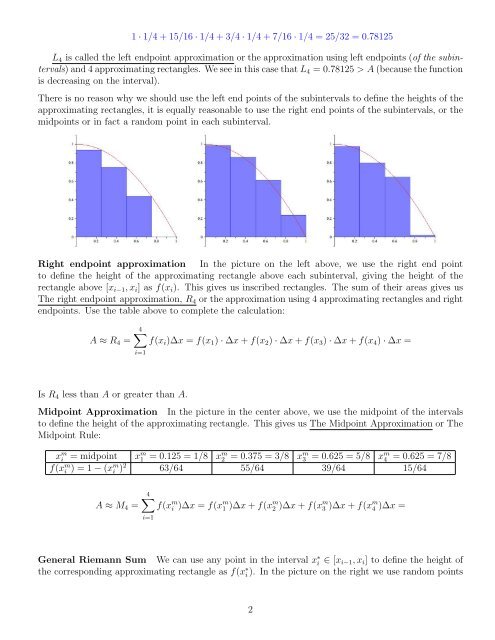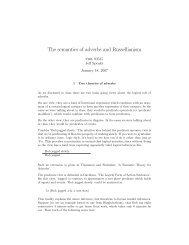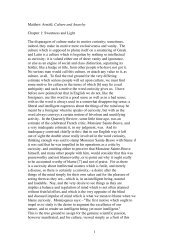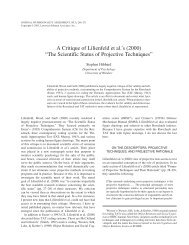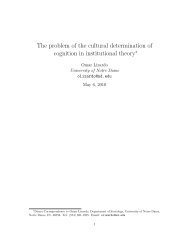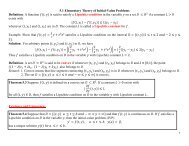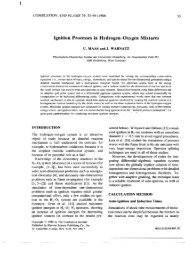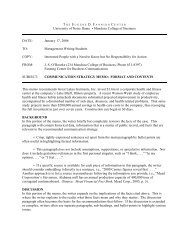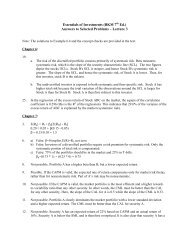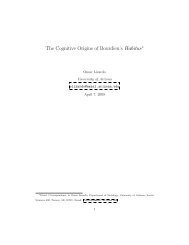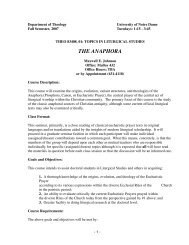Left endpoint approximation
Left endpoint approximation
Left endpoint approximation
Create successful ePaper yourself
Turn your PDF publications into a flip-book with our unique Google optimized e-Paper software.
1 · 1/4 + 15/16 · 1/4 + 3/4 · 1/4 + 7/16 · 1/4 = 25/32 = 0.78125<br />
L4 is called the left <strong>endpoint</strong> <strong>approximation</strong> or the <strong>approximation</strong> using left <strong>endpoint</strong>s (of the subintervals)<br />
and 4 approximating rectangles. We see in this case that L4 = 0.78125 > A (because the function<br />
is decreasing on the interval).<br />
There is no reason why we should use the left end points of the subintervals to define the heights of the<br />
approximating rectangles, it is equally reasonable to use the right end points of the subintervals, or the<br />
midpoints or in fact a random point in each subinterval.<br />
Right <strong>endpoint</strong> <strong>approximation</strong> In the picture on the left above, we use the right end point<br />
to define the height of the approximating rectangle above each subinterval, giving the height of the<br />
rectangle above [xi−1, xi] as f(xi). This gives us inscribed rectangles. The sum of their areas gives us<br />
The right <strong>endpoint</strong> <strong>approximation</strong>, R4 or the <strong>approximation</strong> using 4 approximating rectangles and right<br />
<strong>endpoint</strong>s. Use the table above to complete the calculation:<br />
A ≈ R4 =<br />
4<br />
f(xi)∆x = f(x1) · ∆x + f(x2) · ∆x + f(x3) · ∆x + f(x4) · ∆x =<br />
i=1<br />
Is R4 less than A or greater than A.<br />
Midpoint Approximation In the picture in the center above, we use the midpoint of the intervals<br />
to define the height of the approximating rectangle. This gives us The Midpoint Approximation or The<br />
Midpoint Rule:<br />
x m i = midpoint x m 1 = 0.125 = 1/8 x m 2 = 0.375 = 3/8 x m 3 = 0.625 = 5/8 x m 4 = 0.625 = 7/8<br />
f(x m i ) = 1 − (x m i ) 2 63/64 55/64 39/64 15/64<br />
A ≈ M4 =<br />
4<br />
i=1<br />
f(x m i )∆x = f(x m 1 )∆x + f(x m 2 )∆x + f(x m 3 )∆x + f(x m 4 )∆x =<br />
General Riemann Sum We can use any point in the interval x ∗ i ∈ [xi−1, xi] to define the height of<br />
the corresponding approximating rectangle as f(x ∗ i ). In the picture on the right we use random points<br />
2


